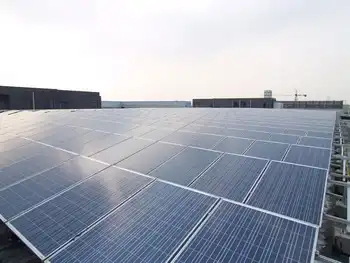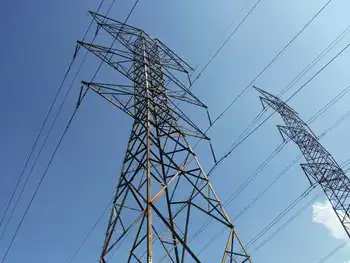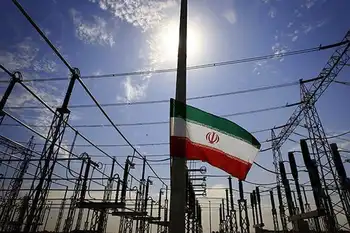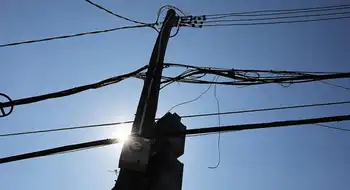Florida Power & Light announces 3-year plan to strengthen grid
By Florida Power & Light
Substation Relay Protection Training
Our customized live online or in‑person group training can be delivered to your staff at your location.

- Live Online
- 12 hours Instructor-led
- Group Training Available
FPL expects to invest approximately half a billion dollars over the next three years to continue to improve the overall resiliency of the electric system for customers.
The plan builds on the companyÂ’s industry-leading storm hardening initiative by incorporating additional lessons learned from Superstorm Sandy, such as those related to flooding, as well as from Florida storm activity in 2012.
These recent experiences show that electric infrastructure that has been strengthened performs better in preventing some storm-related outages, speeding restoration times following severe weather and delivering better overall everyday reliability.
“If Florida were a country, its economy would be the 21st largest in the world, and business operations and residents’ lives are increasingly reliant on computers, tablets, smartphones and other devices that depend on electricity,” said FPL President Eric Silagy. “When severe weather strikes, it causes damage and produces power outages, so preparation is crucial. While no electric system can be fully stormproof, and we have been working to strengthen the grid and improve its resiliency for some time, the acceleration of this effort will help us get businesses up and running and residents’ lives back to normal more quickly after storms.”
The accelerated hardening effort recently announced builds upon the approved program that FPL has been executing since 2007. From 2007 through 2012, FPL invested a total of nearly $460 million to strengthen the electricity-delivery backbone and harden infrastructure serving facilities that are critical to communities such as hospitals, police and fire stations, 911 facilities, water-treatment plants, grocery stores, gas stations and pharmacies.
These investments translate both into faster restoration during major storms and improved everyday reliability for customers. FPLÂ’s experience with the recent tropical storms shows main power lines that have been hardened are roughly half as likely to experience an outage during severe weather. In addition, under normal weather conditions, hardening a power line reduces the frequency of daily outages by up to 40 percent.
“We are constantly benchmarking ourselves against other electricity providers in order to learn from their best practices. We actively incorporate what we learn into our business in order to improve our customers’ service and experience. The accelerated hardening effort we’re announcing is a great example of that,” said Silagy. “Importantly, the stable, four-year environment provided by last year’s base rate agreement allows us to make significant investments, such as accelerated hardening, which will benefit our customers for generations to come.”
2013-2015 Electric Infrastructure Storm Hardening Plan
Under FPLÂ’s 2013-2015 Electric Infrastructure Storm Hardening Plan, recently filed with the Florida Public Service Commission, the company expects to invest in the range of $428 million to $646 million over the next three years to continue to improve the overall resiliency of the electric system for customers. Because FPL is operating under a four-year rate agreement, this plan does not impact customer rates during the three-year period of the investments.
Specifically, FPLÂ’s 2013-2015 plan includes investments to:
- Prioritize hardening for critical facilities and other essential community needs: Since 2007, FPL has been strengthening infrastructure serving hundreds of critical facilities and other essential community needs such as hospitals, police and fire stations, and grocery stores. FPL plans to continue this effort by strengthening poles and equipment serving approximately 250 to 370 critical facilities and community needs in 2013 through 2015 – with the goal of completing all critical and community-need hardening throughout its territory in 2016, several years earlier than FPL’s 2010-2012 plan.
- Accelerate the deployment of wind-resilient transmission structures and equipment: Between 2007 and 2012, to strengthen the electricity-delivery backbone, FPL replaced more than 4,000 wood transmission structures with stronger concrete structures and upgraded more than 3,600 ceramic post insulators with more resilient polymer material. Beginning in 2013, FPL is accelerating this ongoing program with plans to replace an estimated 1,100 to 1,600 structures per year through 2015 and complete replacement of all ceramic posts on concrete structures by the end of 2014.
- Strengthen key equipment located in areas most vulnerable to storm surge: As part of initiatives arising from lessons learned from Superstorm Sandy, FPL plans to install real-time, water-level monitoring systems to help anticipate challenges that could result from flooding at 25 substations located below the Federal Emergency Management AgencyÂ’s 100-year flood elevations.
“Reliable electricity is the lifeblood of Florida’s economy. By continuing and accelerating our effort to strengthen the grid’s backbone and infrastructure serving critical community needs, we’re making our system stronger for the benefit of all of our customers,” said Silagy. “While we haven’t been hit by a hurricane in several years, the investments we’re making now will help us restore power to customers and get the economy moving again more quickly when the next severe storm strikes.”











